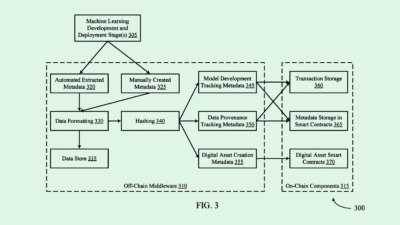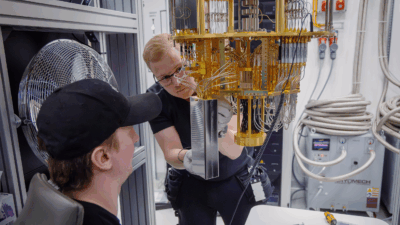AI Might Be Causing a Talent Gap for Enterprises
Mid-level job seekers either need to “upskill themselves faster for critical or hard-to-solve problems.”

Sign up to get cutting-edge insights and deep dives into innovation and technology trends impacting CIOs and IT leaders.
AI is disrupting the talent landscaping on all sides.
While the tech has promised to boost productivity and automate tedious tasks, the rapid evolution of AI and its surrounding technology is making it difficult for enterprises to find the talent to keep up with it. The cost of this talent is also putting stress on IT hiring teams, said Brittany Lutes, research director of the CIO practice at Info-Tech Research Group.
According to Info-Tech’s 2025 Talent Trends report, the top concerns for enterprise hiring managers are the cost of hiring adequate talent and the lack of capable workers. Even if a company does have the resources to spend on the best of the best, those employees are often few and far between, said Lutes.
“If they’re not constantly staying up to date on the technical skills that they need … what they’re doing can become redundant,” said Lutes.
The problem is that many people coming out of university right now – as well as those currently on the job market – are simply not equipped to meet the rapidly changing demands of enterprises, said Lutes.
- The skill gap exists in AI and machine learning itself, as well as its peripheral technology, like cybersecurity, data analysis, compliance, cloud computing and infrastructure, she said.
- “It takes four years to get a degree, but in that time, the curriculum that they would have built and what they would have learned would need to have changed twice by the time they graduated,” Lutes said.
Because of this, companies are often turning to early-career programmers whose salary demands are lower and pairing them with AI coding assistants, while using senior-level developers to fix their mistakes, said Larry Kodali, CEO and founder of AI hiring firm OptimHire.
While this allows enterprises to cut costs, the consequence is that mid-career developers are left in the lurch, he said. “Mid-level developers are really finding it really hard to find jobs,” said Kodali. “Repeatable, easy, low-end tasks – all of that could be done by fresh developers with these (coding) tools.”
This means that these employees need to upskill – and quickly, said Kodali. While there’s always been a scarcity of highly-skilled and senior-level developers, “now there’s much greater demand,” he said, especially as AI tools come into play.
Mid-level job seekers either need to “upskill themselves faster for critical or hard-to-solve problems … or accept the new reality and start learning the new tools that are out there, and maybe join at the lower salary,” Kodali said.
However, the onus of skill development may not solely be on these workers themselves, said Lutes. Enterprises can offer practical training and career development opportunities for early and mid-career employees to take advantage of, and “create environments where people can try things and explore and learn on the job.”
Not only will this allow businesses to train for the exact skill they need, but it may be less costly than simply acquiring talent, she said. Retention tends to be cheaper than hiring, so companies will “probably spend a lot less money if you develop that individual and give them a career path than you would if you went to market,” she said.
“Going forward, we need to stop trying to fill a (needs) gap with a role or a job title,” Lutes added. “What is it that we actually want to achieve, and what are we striving to go forward with in terms of organizational structure? I do believe development will be a better solution than talent acquisition.”











